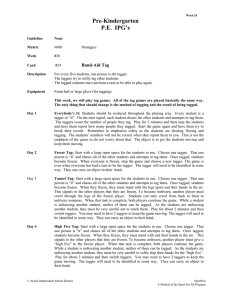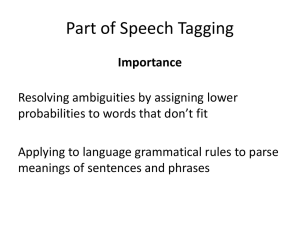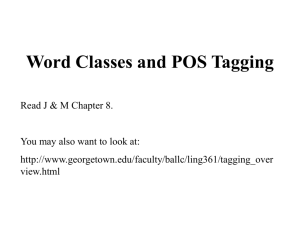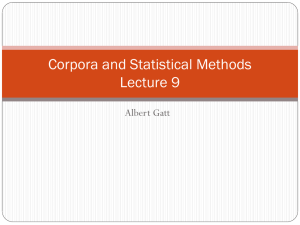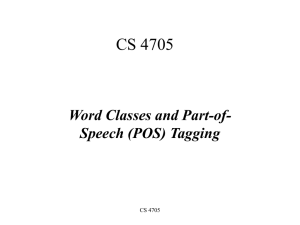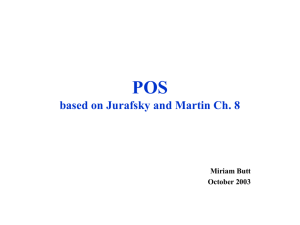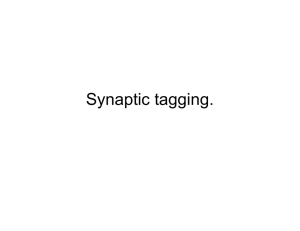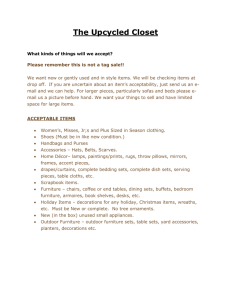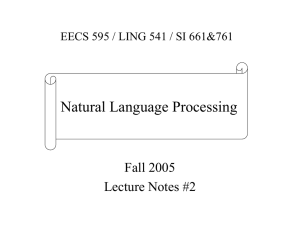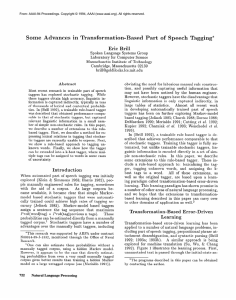Transformation
advertisement
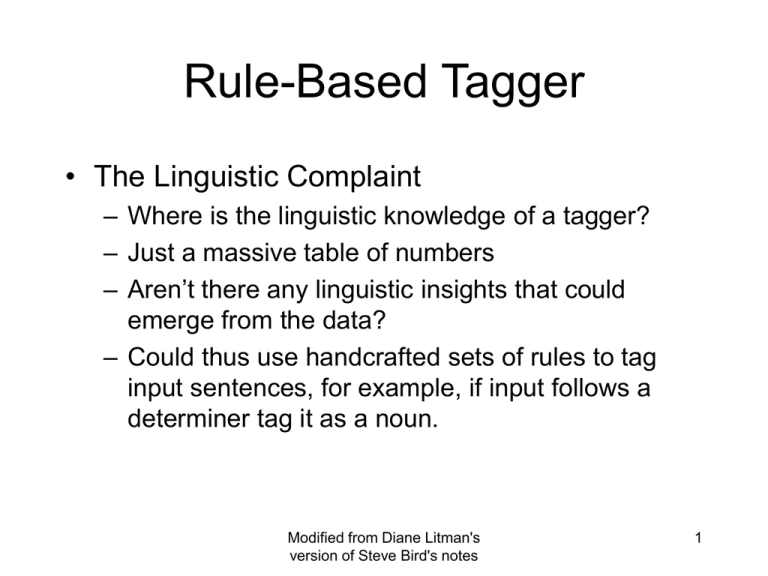
Rule-Based Tagger • The Linguistic Complaint – Where is the linguistic knowledge of a tagger? – Just a massive table of numbers – Aren’t there any linguistic insights that could emerge from the data? – Could thus use handcrafted sets of rules to tag input sentences, for example, if input follows a determiner tag it as a noun. Modified from Diane Litman's version of Steve Bird's notes 1 The Brill tagger • An example of Transformation-Based Learning – Basic idea: do a quick job first (using frequency), then revise it using contextual rules. – Painting metaphor from the readings • Very popular (freely available, works fairly well) • A supervised method: requires a tagged corpus Slide modified from Massimo Poesio's 2 Brill Tagging: In more detail • Start with simple (less accurate) rules…learn better ones from tagged corpus – Tag each word initially with most likely POS – Examine set of transformations to see which improves tagging decisions compared to tagged corpus – Re-tag corpus using best transformation – Repeat until, e.g., performance doesn’t improve – Result: tagging procedure (ordered list of transformations) which can be applied to new, untagged text An example • Examples: – They are expected to race tomorrow. – The race for outer space. • Tagging algorithm: 1. Tag all uses of “race” as NN (most likely tag in the Brown corpus) • • They are expected to race/NN tomorrow the race/NN for outer space 2. Use a transformation rule to replace the tag NN with VB for all uses of “race” preceded by the tag TO: • • They are expected to race/VB tomorrow the race/NN for outer space Slide modified from Massimo Poesio's 4 Example Rule Transformations Sample Final Rules


